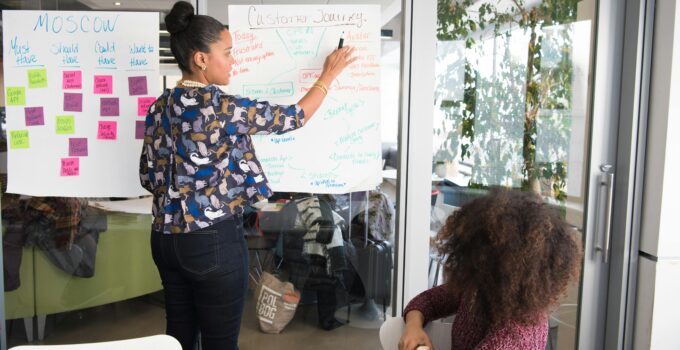Employee assessments are essential tools for gauging performance, making promotion decisions, and identifying areas for improvement. However, assessments can also be fraught with ethical challenges, particularly regarding ensuring fairness and objectivity. Navigating these challenges requires careful attention to both individual rights and organizational goals. Below are nine key ethical considerations in employee assessments, with guidance on maintaining fairness and objectivity while avoiding bias. 1. Avoiding bias and discrimination One of the most significant ethical challenges in employee assessments is avoiding conscious or unconscious bias. Race, gender, age, or disability should not influence the evaluation process. Employers must proactively use tools
In the modern workplace, learning and development programs have become indispensable tools for fostering employee growth and enhancing organizational performance. These programs are designed to improve employees’ skills, knowledge, and competencies, positively influencing their performance and assessments. Below are nine key points on the impact of learning and development programs on employee assessments and strategies for incorporating these insights into performance evaluations. 1. Enhancing skill proficiency and knowledge Learning and development programs enhance employees’ skill proficiency and knowledge. By participating in these programs, employees acquire new skills and update existing ones, making them more competent in their roles. Employees who
In today’s dynamic and competitive business environment, the skills of a workforce are a critical determinant of an organization’s success. As industries evolve and technology advances, the skill requirements within companies continuously change. Identifying and addressing skill gaps is crucial for maintaining a competitive edge and ensuring a business’s sustained growth and adaptability. Below are nine key points on addressing skill gaps and how targeted assessments and training can effectively bridge these gaps: 1. The importance of identifying skill gaps Skill gaps refer to the disparity between an employee’s skills and the skills required to perform their job effectively. Employees
Creating high-performing teams is a critical aspect of organizational success. Effective teams achieve their goals and foster a positive work environment. One of the most powerful tools available to managers and HR professionals in this endeavor is assessment data. By leveraging this data, organizations can build balanced and effective workgroups that complement each other’s skills, strengths, and areas for development. Here are nine key points on how assessment data can achieve this. 1. Identifying complementary skills One of the primary benefits of using assessment data is the ability to identify complementary skills among team members. Assessments can reveal individual strengths
Conducting effective interviews is crucial for making informed hiring decisions. A well-conducted interview goes beyond standard questions, probing deeper to elicit meaningful insights into a candidate’s skills, experiences, and cultural fit. Here are nine tips to enhance your interview techniques for insightful candidate assessments: 1. Prepare thoroughly Review the candidate’s resume, cover letter, and other submitted materials thoroughly. Understand their background, key achievements, and potential areas of expertise. Additionally, clearly understand the role requirements and the company culture. Formulate questions that relate specifically to the candidate’s experience and how it aligns with the position and organizational values. 2. Create a
In today’s fast-paced business environment, continuous feedback and ongoing assessment practices are pivotal for fostering employee growth and development. Moving beyond the traditional annual performance review model, continuous feedback allows for real-time insights and adjustments, driving personal and organizational success. Here are nine practical tips for implementing effective ongoing assessment practices within your organization. 1. Regular check-ins Scheduling regular one-on-one meetings between employees and managers is fundamental for continuous feedback. These check-ins provide a structured opportunity for discussing progress, addressing concerns, and setting short-term goals. Ideally, these meetings should occur weekly or bi-weekly, allowing for timely feedback and immediate course
Hiring the right candidate goes beyond evaluating their technical skills and experience. Ensuring that a potential employee aligns with your company’s values and culture is crucial for long-term success and employee satisfaction. Below are nine effective strategies for measuring cultural fit during the hiring process. 1. Define your company culture and values clearly Before you can assess cultural fit, it’s crucial to have a clear understanding of your company’s culture and values. Document your core values, mission, and the behaviors that exemplify your workplace environment. This clarity will guide your hiring team and help potential candidates understand what your company
With technological advancements, demographic shifts, and globalization reshaping the workforce, organizations must embrace strategic talent assessments as a proactive tool for anticipating and addressing future talent requirements to thrive in the future of work. Below are nine points exploring the evolving landscape of workforce planning and how strategic assessment methods can help organizations stay ahead of the curve. 1. Understanding the evolving workforce dynamics The future workforce will be characterized by increased automation, remote work, and diverse skills and perspectives. Demographic changes, such as the aging workforce and the rise of Generation Z, further complicate talent management strategies. Organizations must
In today’s dynamic job market, potential candidate assessments go far beyond evaluating technical competencies. While technical skills are undoubtedly necessary, employers have recognized the crucial role of soft skills in predicting an individual’s success within an organization. Below are nine points explaining soft skills and exploring strategies for evaluating them during the hiring process: 1. Understand the versatility of soft skills Soft skills, often called “people skills” or “interpersonal skills,” are essential for fostering team collaboration, communication, and productivity. These skills include emotional intelligence, adaptability, communication proficiency, leadership abilities, and problem-solving aptitude. Unlike technical skills, which can be taught and
Assessment centers have become increasingly popular to evaluate candidates for employment, promotion, or development purposes. Unlike traditional interviews or exams, assessment centers provide a more comprehensive evaluation by simulating real-life work situations. However, success in an assessment center requires careful preparation and the application of specific strategies. Below are nine strategies for designing and implementing assessment centers that yield meaningful insights and drive organizational success. 1. Clearly define objectives and competencies Articulating the objectives and competencies to be assessed sets the foundation for an assessment center program. By defining clear objectives, organizations ensure alignment with their strategic goals and job










